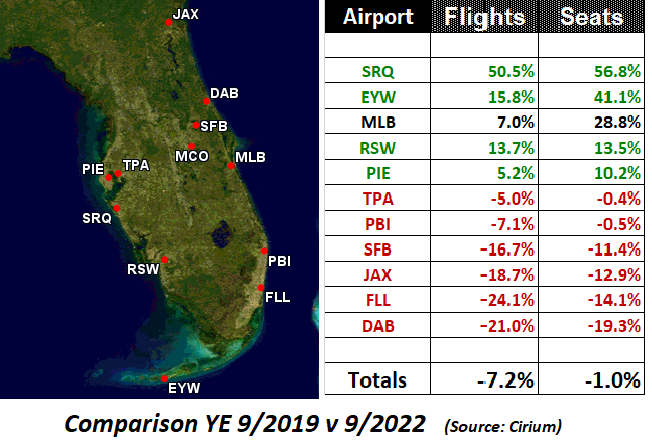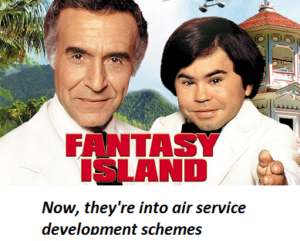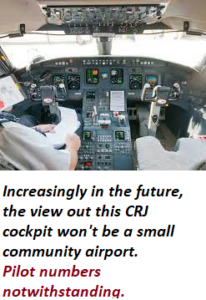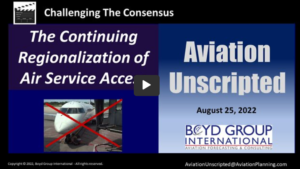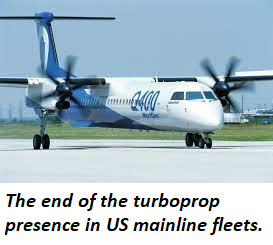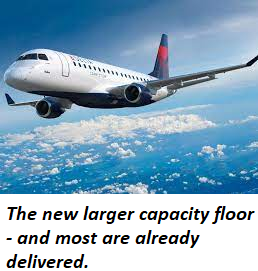Small Community “Commercial Service” –
A Term That’s Undefined & Mis-Understood
For those who receive Boyd Group International’s weekly Touch & Go aviation update, this past week we pointed out one very hard fact facing the US air transportation system. One that has been completely ignored in all the din about pilot shortages and loss of small community access.
Airline fleet changes are shifting where air service can be supported. And where it cannot be supported.
That Market Study Is Useless If There’s No Airplanes. Increasingly, raw economics are eliminating the airliners that have any earthly chance of supporting connective air service at small communities. Like, fewer and fewer flying machines that can make any money or ROI. Those have gone away, and there are more that will be flying into the desert in 2023.
Needed: A More Direct & Honest Air Service Bedside Manner. Let’s be really clear. A lot of small communities are prime targets for intellectual confidence schemes.
It’s quite the process. There are aviation “advisors” who’ll urge communities to toss all the community money possible into revenue guarantees. Then form a civic task force and feed it enough flashy but inconsequential data as possible to keep the mojo flowing. Don’t forget the jive-time “catchment area” studies, promising a Moses-like march back to the local airport when air service returns. And don’t forget the leakage analyses, which are great placebo presentations for the next city council meeting. Just give the airlines this stuff, including at speed date events with pinata-selected airline meetings, and air service salvation is at hand.
There are a number of communities that could get an undergrad degree in this process, with no air service results.
But one clear analysis of the airline industry would end this charade in its tracks. A review of emerging airline fleets and strategies. The fact is that for connective network air service, increasingly there aren’t any airplanes.
Let’s wake up and smell the fleet mixes. It started in the 1980s, with the demise of 15-seat, 19-seat, 30-35 seat, and most recently 50-70 seat turboprops. Now, that march of economic realities is hitting the existing fleets of 50-seat jets – CRJ200s & ERJ145s. Without going into a lot of details, these airliners are facing massively escalating costs which just 50 seats aft of the cockpit door have increasing difficulty to support.
In fact, the entire segment of the airline industry from which major airlines lease-in these airliners (misnamed “regional airlines”) appears to be having its entire raison d’etre – the ability to fly with lower labor costs- ripped out. We covered this in the latest Touch & Go insight letter.
A Quick Sniff at Fleet Reality. All the king’s horses and all the community’s “market studies” won’t put this air service Humpty 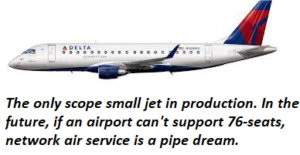 Dumpty together again. The airliners and the economic factors that allowed a lot of small communities to have scheduled flights at the local airport are now scrambled into history.
Dumpty together again. The airliners and the economic factors that allowed a lot of small communities to have scheduled flights at the local airport are now scrambled into history.
The 50-seat jets are being retired for economic reasons. Today, the only small jet in production that can fit under existing major airline pilot union scope clauses is the Embraer E175. It has economy seats wider than a 737, adequate overhead bin space, and a passenger experience that is compatible with mainline airliners. Indeed, the original feasibility reviews for this platform was to be a replacement for smaller mainline airliners such as the DC-9-10 and the F-100.
That is great. But with 76 seats it raises the bar in regard to being able to support the numbers of passengers that can be generated at a small community’s local airport. In many cases, that bar is out of reach.
The point here is that some small communities are getting hornswoggled into shelling out for ASD schemes before anybody asks the first primary question: Is there an airline with the fleet and costs and strategy that would be even vaguely interested?
For attracting scheduled flights, particularly at currently unserved small community local airports, here’s the answer: their likely are none. The aircraft now operated, and the economic factors don’t work anymore.
Anybody Ask The Flying Public? Another factor that many of these Pied Piper programs ignore is the consumer. Yup, the consumer. The service that could – if possible – be supported at the local airport is almost never analyzed in regard to other consumer options that may be available. Or even if the contemplated service, say two flights a day, would be of material interest among consumers as a viable travel option. Read: cost, time-travel convenience, and vulnerability of off-schedule operations are things that will affect whether the local service is utilized.
The ULCC Option. The growth of the ULCC segment – which is essentially in a different air transportation system than major airline systems – is in fact a potential target for a lot of small communities.
In effect, these airlines provide an additional discretionary spend option for the community, offering low-cost, high-value leisure travel. But the model is not after filling air service “needs” but instead generating net-new traffic based on chasing discretionary dollars in the community.
That bar for recruiting flights is going up as well. However, a lot of communities are misled into thinking that since it’s “commercial service” it will do wonders to attract new business to the community. Face it. Having three weekly flights to Fort Myers is great, but it’s not air access. By itself, it won’t move the needle in getting more industrial investment into town.
The “Regional Airline” Industry Is Gone, By the Way. Along these lines, Boyd Group International has completed a brief and  concise review of the changes that have taken place in the airline industry since the advent of code-sharing started the process of eliminating what was once an independent “regional airline” industry. We are sending it to our clients, and non-clients can order for $150 by a simple request on our contact page.
concise review of the changes that have taken place in the airline industry since the advent of code-sharing started the process of eliminating what was once an independent “regional airline” industry. We are sending it to our clients, and non-clients can order for $150 by a simple request on our contact page.
Bottom Line: Consider Regionalization. There are no magic bullets to address this. The hard fact is that the cost, raw economics, and communication value of air transportation have all changed. These are not factors that civic pride will fix.
Key futurist point: Rethink the economic potential of rural communities and local airports.
As BGI has pointed out to clients and at various venues, the vast changes in electronic communication have substantially leveled the playing field for small communities v large metro areas in attractiveness for investment.
Yes, air access is part, but a part with declining importance (conveniently) due to the ability to do business electronically. Mr. Nakamura no longer has to spend 30 hours traveling from Yokohama to meet with his staff at the Altoona facility. It works the other way, too.
Plus, in the din and smoke and mirrors of chasing ASD programs, some small communities are ignoring the new emerging trends in logistics and in lifestyle values in America. Think: which community has higher lifestyle values, Billings or San Francisco? Williamsport or Pomona? Johnstown or New York City?
Do a media search, or just watch the 6PM Ken-and-Barbie news to get an idea.
There’s a lot more opportunities for rural communities that traditional thinking allows.
_____________
The Touch & Go Newsletter
We’re honored by the interest and excitement in our weekly Touch & Go newsletter.
 Issued at the end of every week, it outlines issues and thought-leader trends that are not always front-and-center in most aviation forums.
Issued at the end of every week, it outlines issues and thought-leader trends that are not always front-and-center in most aviation forums.
If you’re interested in getting on our distribution list, just click here, and request. We’d love to have you join the movement toward impactful aviation insight.


